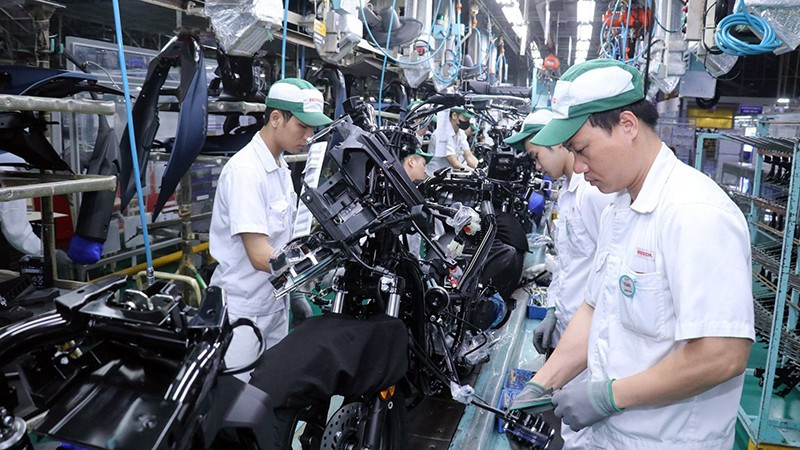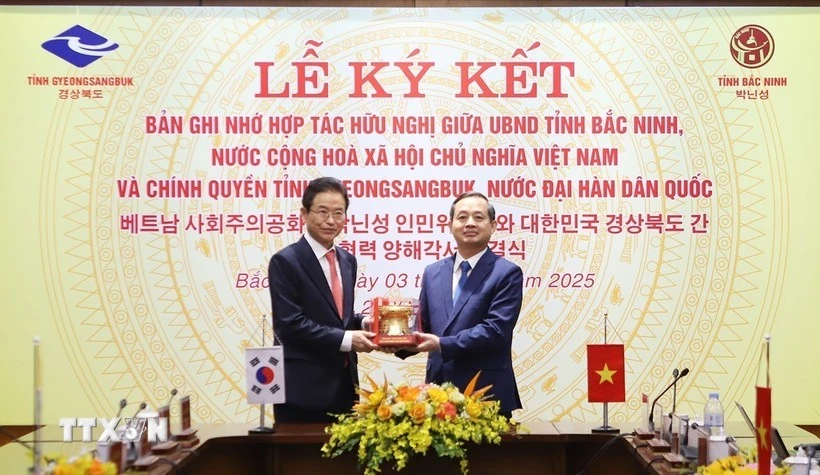Strengthening supply-demand connections
To achieve these results, in 2024, the MoLISA will continue to direct the implementation of synchronised solutions to develop the labour market. This includes focusing on organising and implementing programmes and projects for a flexible, modern, effective, sustainable, and integrated labour market to quickly restore the socio-economic situation. Notably, addressing labour shortages in regions with large industrial zones will involve timely solutions to supply workers.
Accordingly, solutions to connect supply and demand, especially the exchange of information related to labour and employment among the provinces with abundant human resources and key economic cities, will be strengthened. Employment exchanges will be organised, and funding for job creation support loans will be disbursed.
The system of employment service centres will be reorganised to improve operational efficiency, and the quality and effectiveness of labour supply-demand regulation, connecting workers with employers, will be significantly enhanced. Policies for job creation support loans from the National Employment Fund and other preferential credit sources will be effectively implemented.
Another key focus is the management of labour activities linked to the national population database and other data systems, in alignment with Project No.06, which has been further strengthened. The synchronised implementation of solutions for labour market recovery and development has yielded positive outcomes, helping industrial parks, export processing zones, and key economic regions maintain a stable workforce.
Efforts to send Vietnamese workers abroad have also been intensified. The selection, training, and sending of workers to work overseas under contracts have been reinforced and tightly managed. The programme has recovered rapidly, with the number of workers sent abroad gradually increasing in quantity and improving in quality, generating significant foreign currency earnings to support domestic socio-economic development.
Statistics show that as of October 2024, there were 159,748 foreign workers employed in Vietnam. Currently, over 700,000 Vietnamese workers are working overseas under contracts, earning stable incomes and remitting substantial funds—approximately 3.5–4 billion USD annually—back to Vietnam. The management of foreign workers has ensured the supply of high-quality human resources to meet domestic market demands that Vietnamese workers have yet to fulfil, striking a balance between domestic and foreign labourers under the national human resource development strategy.
Continuing to improve the institution
The MoLISA has assessed that while the labour market has recovered quickly and shown development, there are slight labour shortages in key areas, particularly those with a high concentration of industrial parks and export processing zones. Surveys indicate that labour shortages are occurring but are not severe. This situation is attributed to some large enterprises receiving additional orders for year-end holiday production without having pre-prepared labour resources. The labour shortage primarily involves unskilled workers in industries such as textiles, garment manufacturing, and electronic assembly.
Moreover, although employment levels are on the rise, the labour market's development remains unsustainable, with a significant proportion of the workforce engaged in informal employment. The quality of the labour supply reveals numerous shortcomings and limitations, failing to meet the demands of a modern, flexible, sustainable, and integrated labour market. Currently, approximately 37.8 million workers nationwide have not received formal training beyond primary vocational levels, with only 28.1% of workers having obtained certifications or qualifications.
In 2025, to develop a labour market that is flexible, modern, efficient, sustainable, and integrated, the focus will be on ensuring sustainable employment and livelihoods. The MoLISA will continue to build and enhance the labour market information system and the labour-employment database.
Proposed solutions include effectively strengthening labour supply-demand connection and regulation, encouraging job creation in both the public and private sectors, and supporting workers to seek employment and transition to jobs that align with their skills and aptitudes. In addition, it is crucial to enhance effective labour utilisation through programmes, projects, and credit policies that support job creation and assist workers in actively engaging in the labour market.
There is a need to implement comprehensive and effective policies, programmes, and projects to address employment issues domestically; enhance the effectiveness of loans from the National Employment Fund; and prioritise support for migrant workers moving from rural areas to urban centres, industrial zones, and border regions.
Another requirement is to improve capacity and strengthen labour demand forecasting, including the need for vocational training within enterprises. This involves assessing the workforce requirements in terms of quantity, quality, occupational structure, and skill levels to align with the needs of businesses.
At the same time, the sector's priority goal is to stabilise and maintain traditional overseas labour markets, while developing and expanding markets with high-income levels that align with the qualifications and skills of domestic workers.
Businesses will be guided to proactively prepare their labour resources and effectively implement training programmes for occupational skills and foreign languages for workers before they go abroad. All workers must receive orientation education in compliance with the customs, traditions, and laws of the host country. Efforts will be strengthened to protect the legal rights and interests of workers and businesses and provide support for career counselling and job placement for workers upon their return.
The labour and employment situation in 2024 has returned to the normal growth trajectory seen before the COVID-19 pandemic. In the first nine months of the year, the labour force aged 15 and above reached 52.5 million, an increase of 210,600 compared to the same period last year. The labour force participation rate stood at 68.5%, with 51.4 million people employed, an increase of 212,000 compared to the same period last year.
Source: General Statistics Office of Vietnam
















